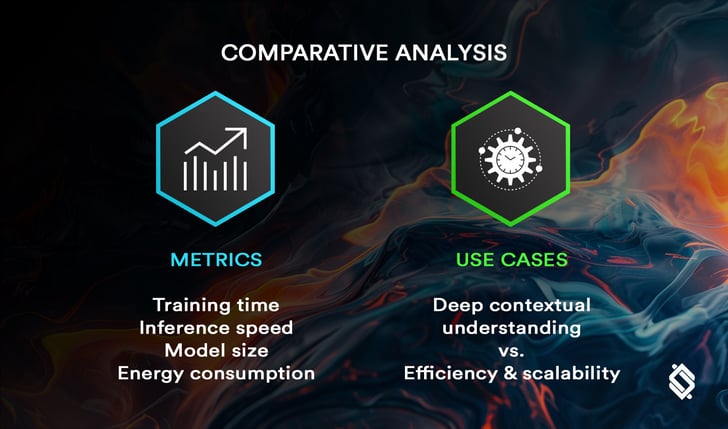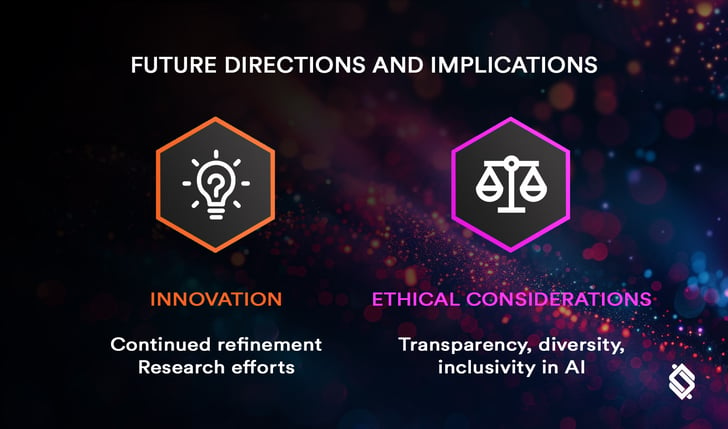In the rapidly evolving landscape of technology, Data & AI have emerged as indispensable tools for companies aiming to stay ahead of the curve. With advancements in Natural Language Processing (NLP), the spotlight is now on language models, the backbone of many AI applications. However, amidst the buzz surrounding these models, understanding the nuances between Large Language Models (LLMs) and Small Language Models (SLMs) becomes crucial for technology company leaders. In this post, we delve into the intricacies of LLMs and SLMs, explaining their benefits, trade-offs, and implications for business strategies.
Defining Large Language Models
![]()
Large Language Models, characterized by their expansive parameter space and computational prowess, have revolutionized the realm of NLP. These models, exemplified by OpenAI's GPT series and Google's BERT, boast millions to billions of parameters, enabling them to grasp intricate linguistic nuances and generate coherent, contextually relevant text.
The advantages of LLMs are manifold. They excel in tasks like text generation, translation, and summarization, empowering businesses to automate content creation, streamline customer interactions, and enhance information retrieval systems.
However, the journey towards leveraging LLMs isn't devoid of challenges. The colossal computational requirements necessitate significant investments in infrastructure, while ethical concerns regarding bias and misuse loom large. Nonetheless, with meticulous planning and responsible deployment, LLMs hold the potential to revolutionize how companies engage with data and AI.
10 Breakthrough Research Papers on Large Language Models
Unveiling Small Language Models
![]()
On the flip side, Small Language Models offer a more streamlined alternative, catering to businesses with resource constraints or stringent latency requirements. These models, exemplified by MiniLM, DistilBERT, and ALBERT, strike a balance between efficiency and performance by compressing the parameter space while retaining essential linguistic capabilities.
SLMs are particularly suited for applications where real-time processing or deployment on edge devices is paramount. They enable businesses to achieve comparable results to LLMs with reduced computational overheads, making them an attractive option for startups or organizations with limited resources.
However, the trade-offs associated with SLMs, such as decreased accuracy or contextual understanding, warrant careful consideration. Despite their limitations, SLMs offer a pragmatic solution for companies seeking to harness the power of AI without breaking the bank.
Understanding Small Language Models (SLMs): The Unsung Heroes of AI
Comparative Analysis

To make an informed decision between LLMs and SLMs, a comparative analysis is imperative. Benchmarks and studies evaluating the performance of both models across various tasks and scenarios shed light on their strengths and weaknesses. Factors like training time, inference speed, model size, and energy consumption serve as crucial metrics for evaluation.
While LLMs outshine SLMs in tasks demanding deep contextual understanding or generating high-quality text, SLMs hold their ground in applications where efficiency and scalability are paramount. Understanding the specific requirements of each use case and aligning them with the capabilities of LLMs or SLMs is pivotal for maximizing ROI and ensuring optimal performance.
Small models, big impact: SLMs vs. LLMs
Future Directions and Implications

Looking ahead, the trajectory of language model development is poised for continued innovation and refinement. Research efforts aimed at enhancing the efficiency and effectiveness of both LLMs and SLMs are underway, promising new breakthroughs and opportunities.
However, alongside technical advancements, the ethical and societal implications of AI adoption cannot be overlooked. As technology company leaders, it is incumbent upon us to navigate these complexities responsibly, ensuring that AI serves as a force for good. Embracing transparency, diversity, and inclusivity in AI development and deployment is essential for fostering trust and driving meaningful impact.
The most important AI trends in 2024
Conclusion

In conclusion, the journey towards harnessing the power of Data & AI is paved with myriad choices, with LLMs and SLMs representing two sides of the same coin. By understanding their strengths, weaknesses, and applications, technology company leaders can make informed decisions that align with their business objectives and values.
Whether opting for the computational prowess of LLMs or the efficiency of SLMs, the key lies in leveraging AI responsibly to unlock innovation, drive growth, and shape a brighter future for humanity. As we embark on this transformative journey, let us embrace the power of Data & AI to chart new frontiers and create lasting value for generations to come.
A Case Study: Increasing AI Ethics Maturity in a Startup
OUR MLOPS TALENT SERVICES
Unleash Data-driven Innovation with MLOps Talent
Embrace the power of MLOps with our exceptional talent pool. From model deployment to continuous integration, our expert professionals bring a cohesive and agile approach to streamline your machine learning workflows. Let us help you build an MLOps dream team that empowers collaboration, accelerates innovation, and maximizes the potential of your data-driven initiatives in today's fast-paced digital landscape.



